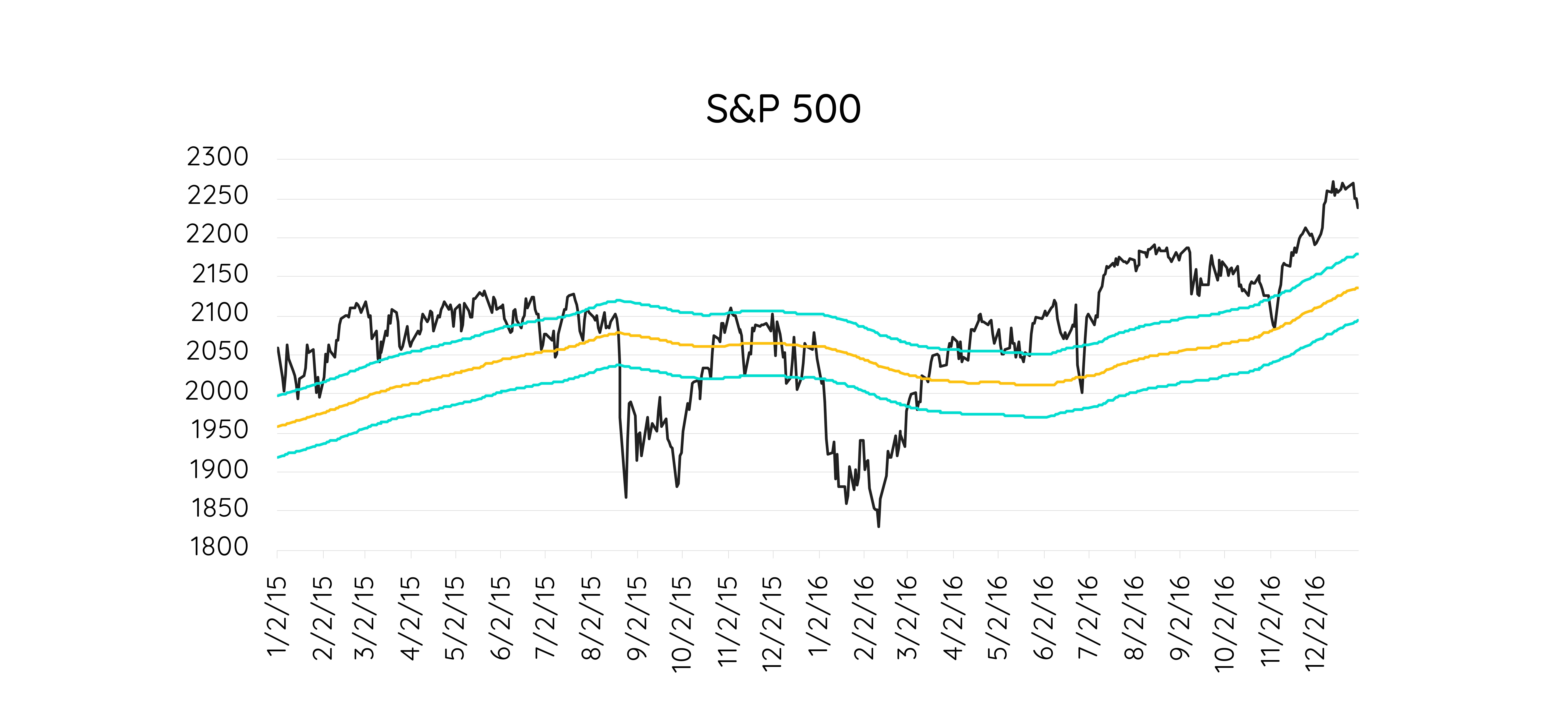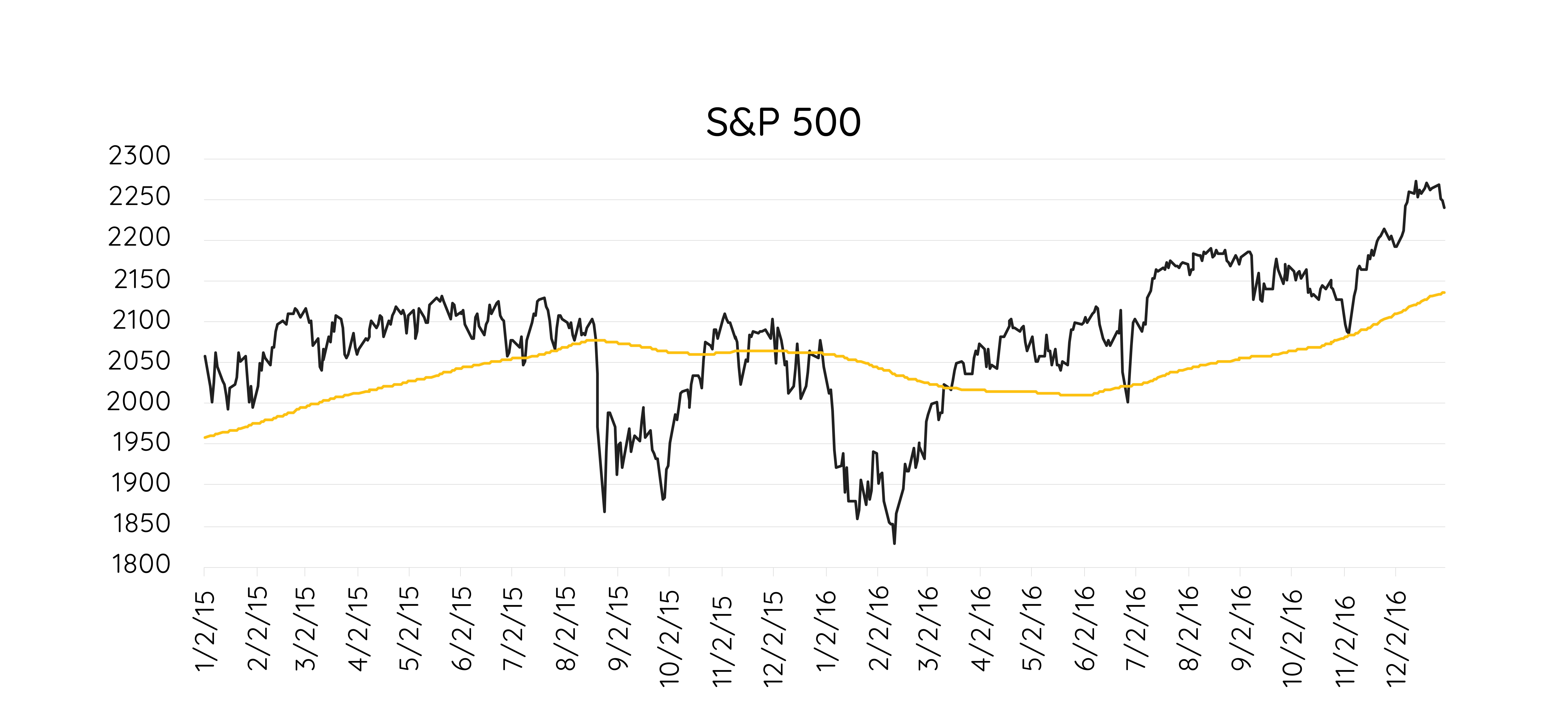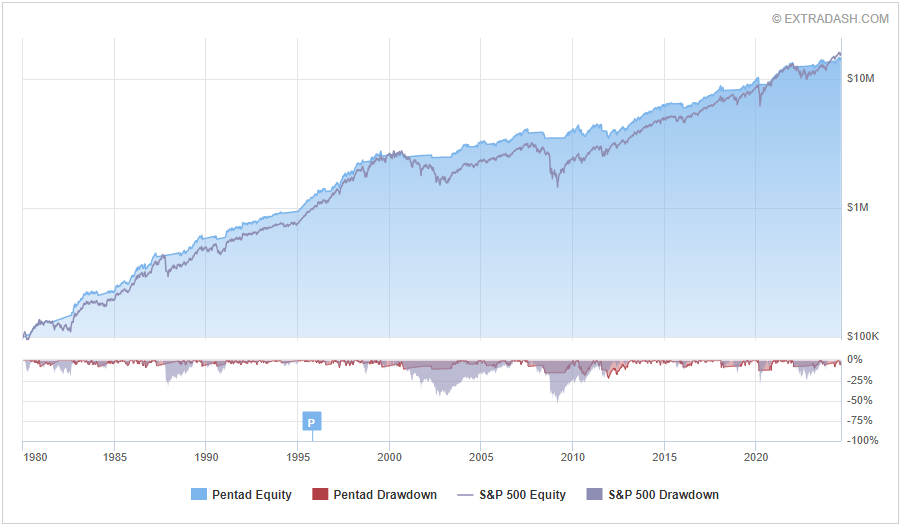Penta System
Intermarket analysis is an approach in technical trading that examines relationships between different asset classes or financial markets to generate trading signals.
An intermarket indicator generates signals from data based on markets other than the one being traded.
For example, while trading the S&P 500, one system might generate signals using data from the bond market while another uses economic indicators to trade the same index.
One of the earliest developers of this type of system was Nelson Freeburg. The CMT (Chartered Market Technician) Association described him as this: “Freeburg, who passed away suddenly in 2015, was the acclaimed publisher of the Formula Research newsletter, which gave subscribers from all over the world insight into predicting trends in the market.”
In 1995, the Penta trading system was introduced in Freeburg’s newsletter. It is an inter-market system which analyzes the price trend of five different indicators.
Indicators
The Penta system evaluates the following indicators:
S&P 500
Dow Jones Transportation Index
Dow Jones Utilities Index
Dow Jones Corporate Bond Index
NYSE Weekly Advance / Decline Line
Each indicator has a trend-based filter that generates buy and sell signals. Penta uses a combination of these signals to determine whether to buy or sell stocks.
For Penta to produce a buy signal, all five indicators must be in an uptrend. Conversely, a sell signal is generated if two of the indicators are in a downtrend.
Whipsaws and Filters
A primary risk for all trend following systems, including Penta, is the whipsaw. A whipsaw is when the price drops enough to trigger a sell signal but then quickly reverses, activating another buy signal.
When repeated consecutively, this process can be detrimental to any trend system.
Penta employs two methods to mitigate whipsaws, the first being moving average bands.
This method places bands around a moving average at a certain percentage (which varies per indicator). This creates a zone, and a signal is only generated when the price moves outside of this zone.
For an example, see the chart below of the S&P 500 index and its 200-day moving average with two percent bands from 2015 through 2016.

*Source: Norgatedata.com
Without the bands, multiple signals would have been generated as the price fluctuated around the yellow 200-day moving average, causing considerable damage to the system.
Adding the bands would have reduced the whipsaws, with only one occurring in November 2015 when the price briefly exceeded the upper band.
The second method to reduce whipsaws considers the slope of a moving average. The logic being that when the average price is trending downward, it should trigger a sell signal.
Below is the same chart of the S&P 500 with the 200-day moving average in yellow.

*Source: Norgatedata.com
For this method, the signal is generated when the direction of the yellow line moves up or down. In September 2015, the 200-day average turned downward, producing a sell signal. Then, in late October, a buy signal was triggered, followed by another sell signal at the start of 2016.
These two examples show that the primary risk of trend-following systems cannot be fully eliminated. In choppy markets, repeated false signals lead to whipsaws.
Back Test of Original Rules
Below is a simulation of the results using the original Penta rules. The shaded blue area represents Penta, while the other equity curve is the S&P 500 index.

*Simulation data and screenshot from: extradash.com
According to the back test, Penta performed well during prolonged uptrends and protected capital during downtrends, which is the goal of a long-term trend-following system.
Potomac Application
Penta is a unique system because it answers the three key questions that are important to our process.
What is the trend of the market (S&P 500)?
Is the trend healthy (breadth as measured by the Advance/Decline Line)?
Is the trend confirmed by intermarket themes (Transports, Bonds, etc.)?
While we do not use the exact version of the Penta system described here, we do use a version of it. It is what we would describe as a “base system.” Base systems are designed to identify the prevailing market environment, bullish or bearish. It is hard for our composite model to stay invested for extended periods of time if our version of the Penta system is not on a buy signal.
At its core, it is a trend following methodology. It is not trying to catch every twist and turn in the market, and it is certainly not trying to catch “the top” or “the bottom.” In fact, the market is likely moving lower when it gives a sell signal and higher when it gives a buy signal.
The system is doing its job when/if it catches most of a prolonged uptrend and misses most of a prolonged downtrend.
Source for original rules: extradash.com
Disclosure: Past performance does not guarantee future results. There is no guarantee that any investment strategy or account will be profitable or will avoid loss. Individual investors’ objectives, financial situations, their specific instructions, or restrictions on investments, or the time at which an account is opened, or additions are made may result in different trades and returns. Performance for the strategy presented may differ materially (more or less) from the performance of the comparable benchmark and other Potomac investment strategies. Market and economic conditions could change in the future producing materially different returns. You cannot invest directly in an index. This presentation is supplemental to the composite report. This information is prepared for general information only and should not be considered as individual investment advice nor as a solicitation to buy or offer to sell any securities. This material does not constitute any representation as to the suitability or appropriateness of any investment advisory program or security. Please note that back testedresults are hypothetical in nature. Hypothetical performance has been prepared with the benefit of hindsight. Hypothetical performance does not guarantee any future results. Hypothetical performance has certain risks and limitations that should be considered. More information about these risks and limitations are available upon request. Please visit our FULL DISCLOSURE page.
PFM-356-20240911
